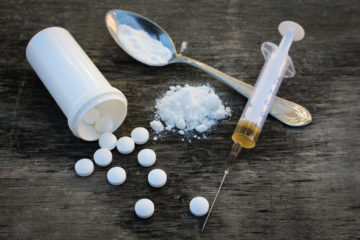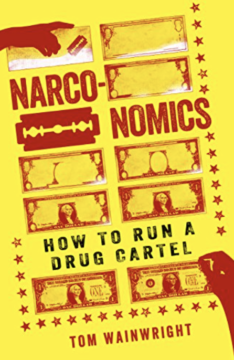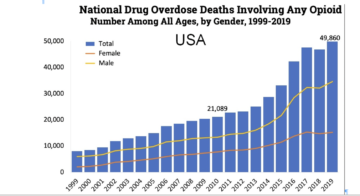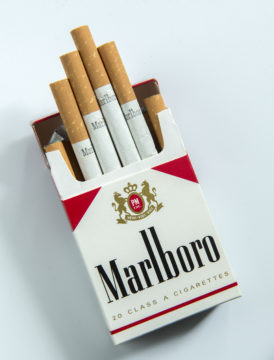by Mark Harvey
 Sometimes our American ideas about social problems and how to fix them are downright medieval, ineffective, and harmful. And even when our methods are ineffective and harmful, we are likely to stick to them if there is some moralistic taint to the issue. We are the children of Puritans, those refugees who came to America in the 17th century to escape King Charles.
Sometimes our American ideas about social problems and how to fix them are downright medieval, ineffective, and harmful. And even when our methods are ineffective and harmful, we are likely to stick to them if there is some moralistic taint to the issue. We are the children of Puritans, those refugees who came to America in the 17th century to escape King Charles.
To say Puritans had strong beliefs is as understated as saying Genghis Khan enjoyed a little pillaging and conquering out on the Asian steppes. The Puritans were believers like no believers before them. And in general, they weren’t a lot of fun. As if religious services aren’t serious enough, the Puritans eliminated choral music and musical instruments from their churches because those touches were a little too much like the papistry of the Catholic Church. Puritans in Massachusetts even banned Christmas for a spell as they thought the holiday had a pagan origin and therefore embraced idolatry.
The journalist H.L. Menken put it well when he said, “Puritanism is the haunting fear that someone, somewhere, may be happy.”
So when you forge a nation with some strong puritan roots along with some marvelous practicality, such as the United States, sometimes you get pretty mixed up results. The prime example is our colossally counter-productive “War on Drugs,” now 50 years in the works.
 Make no mistake, drug addictions can ruin lives and the international drug trade with its ruthless competition has led to hundreds of thousands of gruesome murders. From Medellin to Miami, and from Wichita to Juarez, the production, smuggling, sales, and consumption of hard drugs has laid waste to both the suppliers and the users. In the United States, tens of thousands die every year from drug overdoses, and over the years, millions of lives have been destroyed. Economists call drug addictions “The Disease of Despair.”
Make no mistake, drug addictions can ruin lives and the international drug trade with its ruthless competition has led to hundreds of thousands of gruesome murders. From Medellin to Miami, and from Wichita to Juarez, the production, smuggling, sales, and consumption of hard drugs has laid waste to both the suppliers and the users. In the United States, tens of thousands die every year from drug overdoses, and over the years, millions of lives have been destroyed. Economists call drug addictions “The Disease of Despair.”
Fifty years ago when the Nixon administration first began “The War on Drugs,” the very idea or metaphor of a war on a social problem must have been appealing. In the ensuing years, we’ve dumped billions and billions of dollars into that war, but it’s not working.
Pick your metric, whether it’s the cost of illicit drugs on the street, the number of users or the number of drug overdoses, our efforts to solve the problem are having little effect and, in some cases, the numbers have gotten worse. The price of a gram of cocaine on the streets in 2012 is roughly a quarter the price of a gram sold in the early 1980s. The bulk price of heroin is about one-tenth of what it was in the early 1980s.
In the last 20 years, the number of heroin users in the United States has more than doubled. In 2019, 70,000 Americans died of drug overdoses, more than triple the number who died in 1999.
We could try the same approach to solving the drug problem for another 50 years, with our politicians making grand statements about the immorality of drugs, our military supplying expensive helicopters and surveillance equipment to the producing nations, and throwing hundreds of thousand of people into prison, or we could look at some basic economic concepts and reconsider. Maybe we’ve chosen the wrong path and the wrong metaphor to confront the drug problem.
One of the most misguided elements of our war on drugs is attacking the producers. I’m not talking about the murderous cartels, but the people who grow the crops that the cartels use in their manufacturing plants. They are typically poor farmers in countries like Bolivia, Peru, and Columbia growing coca leaves, the base product for making cocaine, or farmers in Asia growing poppies for making heroin. With the financial and technical support of the United States, the governments of those nations have destroyed hundreds of thousands of acres of coca and poppy plantations. The theory goes, if enough of the producers are eliminated or hampered in their growing of the base product, the price of the drug on the street will become prohibitively expensive for the drug addict. Unfortunately, that simplistic version of supply and demand doesn’t work in the real world.
 As Tom Wainwright points out in his fascinating book, Narco-Nomics, the cost of producing the base product such as coca leaves is a minuscule fraction of the price of a hard drug once it’s sold on the streets. Wainwright takes us through the price markups of a kilogram of cocaine. To produce that kilogram requires about 350 kilograms of coca leaves at a cost of around $385. That same kilogram would bring in about $122,000 once it’s sold on the streets of, say, Cleveland. That’s a markup of about 32,000%. Even if the eradication programs managed to triple the cost of growing coca leaves the result would be that a gram of cocaine on the streets would cost a consumer about $122.77 instead of $122. It’s unlikely that a coke addict desperate for the drug would tut-tut and abstain from the drug because the price of a gram went up 77 cents.
As Tom Wainwright points out in his fascinating book, Narco-Nomics, the cost of producing the base product such as coca leaves is a minuscule fraction of the price of a hard drug once it’s sold on the streets. Wainwright takes us through the price markups of a kilogram of cocaine. To produce that kilogram requires about 350 kilograms of coca leaves at a cost of around $385. That same kilogram would bring in about $122,000 once it’s sold on the streets of, say, Cleveland. That’s a markup of about 32,000%. Even if the eradication programs managed to triple the cost of growing coca leaves the result would be that a gram of cocaine on the streets would cost a consumer about $122.77 instead of $122. It’s unlikely that a coke addict desperate for the drug would tut-tut and abstain from the drug because the price of a gram went up 77 cents.
Wainwright has the perfect analogy for this crazy policy of spraying crops with nasty herbicides and burning fields to raise the price of cocaine on the street: the painter Gerhard Richter who receives more than $40 million for a single painting probably wouldn’t notice if the price of a tube of his thick oil paint doubled or tripled.
The twin strategy in the American war on drugs is to go after the consumer with harsh jail sentences and the criminalization of drug abuse. For decades, just about every state in the union had very severe penalties for possession of controlled drugs. Some states still have very severe penalties.
Close to half a million Americans are in jail or prison today for drug violations. That’s one in five of the prison population. According to the Bureau of Justice Statistics, we spend around $80 billion per year on incarceration, meaning that we spend close to $16 billion per year on those in prison on drug charges.
 Aside from the high costs of incarcerating people and the scant evidence that incarceration deters drug use, as Wainwright points out in Narco-nomics, prisons make great recruiting grounds for drug gangs and major drug cartels. You have a captive audience (literally), people with poor job prospects on their release, people already addicted to drugs, and people with weak social ties who are looking for security. To be offered protection in a dangerous prison environment, large sums of money for drug running, and a brotherhood sworn on the oath of death is appealing to those who have few other prospects.
Aside from the high costs of incarcerating people and the scant evidence that incarceration deters drug use, as Wainwright points out in Narco-nomics, prisons make great recruiting grounds for drug gangs and major drug cartels. You have a captive audience (literally), people with poor job prospects on their release, people already addicted to drugs, and people with weak social ties who are looking for security. To be offered protection in a dangerous prison environment, large sums of money for drug running, and a brotherhood sworn on the oath of death is appealing to those who have few other prospects.
The Mexican Mafia, a highly organized gang that began in San Quentin Prison in the 1960s, is a good example. It has eighteen guiding rules and you probably shouldn’t join the Mexican Mafia unless you’re pretty committed. Definitely review rule #8 which says, “Membership is for life, the only way out is death,” and also rule #12 which says that “It’s mandatory to assault/kill all dropouts and traitors.” There are 16 other rules that help get across the point that this is a bigger commitment than joining the Rotary Club.
With thousands of “committed” members and subsidiary “vassal” gangs throughout California, The Mexican Mafia has successfully trafficked drugs for more than 50 years. The state and federal prisons incarcerating thousands of men, many of whom for non-violent drug possession, are veritable job fairs or career expos for gangs like The Mexican Mafia.

The craziness of our drug policies can be seen in how just a short time ago we threw people in prison for years for possession or sales of marijuana, even small quantities. Take the case of Patricia Spottedcrow, a young Oklahoma mother, caught in 2010 in a sting operation for attempting to sell $31 dollars of pot. In what was her first offense, the judge gave her a 12-year jail sentence. Although Spottedcrow was released before serving the entire 12 years, she left jail with the stigma of a felon, which made both getting a job and getting a house very difficult.
Now companies that grow, package, and distribute marijuana by the ton are publicly traded on The New York Stock Exchange and NASDAQ and have market caps of billions of dollars. Canopy Growth, a Canadian cannabis company, was the first company to be traded publicly in North America and began trading on the NYSE in 2018 under the symbol CGC. So theoretically a person living in the small town of Kingfisher, Oklahoma, where Spottedcrow was arrested at her mother’s house, could buy millions of dollars’ worth of stock in a cannabis company with their online Schwab account and then go play golf at the Kingfisher municipal course with impunity, while Spottedcrow sat in jail for her $31 sale of weed. Had she not been released on parole, her sentence would have overlapped the 2018 date when Canopy Growth went public. Wrap your brain around that bit of cognitive dissonance.
The true sign that growing and distributing marijuana has become fully mainstream is that the companies now doing it have resorted to the same corporate pablum of dish soap or pharmaceutical companies. Take this part of a mission statement from Canopy Growth:
 Our work starts with understanding our consumer better than anyone else. We leverage best-in-class insights to guide our innovations, creating authentic brands and high-quality products that are loved for their deep connection to human desires and needs.
Our work starts with understanding our consumer better than anyone else. We leverage best-in-class insights to guide our innovations, creating authentic brands and high-quality products that are loved for their deep connection to human desires and needs.
Wow! That’s a far cry from when marijuana was illegal, sold out of panel vans on abandoned lots, and the marketing lingo was basically, “Dude, this stuff is sick!” Not sure I like the corporate version better and I imagine the hardcore stoners get a kick out of knowing that some highly trained and highly paid psychologists at Canopy Growth headquarters are working tirelessly to better understand “their human desires and needs.” For some, the needs are just some high-quality marijuana to make it through four hours of a Hatebreed or an Avenged Sevenfold concert. I’m not even a pot smoker but there’s no way I’d try one of those concerts without about 7 ounces of the pre-rolled 7Acre White Widow sold by Canopy Growth.

When states and the federal government decided to criminalize marijuana and throw people in jail for the possession of a few ounces, there was some pretty strong empirical evidence that Cannabis didn’t exactly lead to violent crimes and antisocial behavior. To wit, if pot is so harmful, how did the universe give us Willy Nelson? The singer/songwriter is reputed to smoke such strong stuff that visits to his traveling bus have led to tales of crippling contact highs and have inspired some pretty good ballads such as this one by Scott Emerick and Toby Keith. Willy’s decades of pot smoking haven’t kept him from singing America through hard times and healing millions of broken hearts. I’m not endorsing taking up marijuana, but if the effect of pot is to give someone that quality of mellow kindness, then I know a lot of members of Congress who would do well to shut up and get on Willy’s bus.
One of the big drug problems in the United States nowadays is the opioid epidemic. Opioid addictions are not new to Americans and one of the worst periods of abusing the drug came after the Civil War. The hypodermic needle was introduced to the United States in 1856 and the ability to inject morphine into injured Civil War soldiers seemed like a miracle to doctors at the time. After the war, doctors in the late 19th century began to inject morphine into patients for everything from headaches to menstrual cramps. In his book, Dark Paradise: A History of Opiate Addiction in America, David Courtwright writes, “Though it could cure little, it could relieve anything.”
The opioid crisis of the 19th century foreshadowed the opioid crisis that we’re experiencing today, and the overuse of opioids back then is similar to the overuse today.
Whereas your vision of a drug pusher might be of a shady character in a seedy part of town walking around with little baggies of illicit substances, the guys who got America really hooked on opioids this century did it in broad daylight wearing tasseled loafers under the banner of respectability and a company called Purdue Pharma. Purdue introduced a highly addictive drug called OxyContin in 1996. OxyContin is a slow-release version of Oxycodone. It’s what’s known in the trade as a semi-synthetic opioid made from an alkaloid found in Persian poppies (Papaver bracteatum).
 As Beth Macy points out in her excellent book Dopesick, Purdue took pushing drugs to a new level. The company began using the data mining company IMS Health to find out which doctors in the United States were prescribing the most painkillers like Percocet and Vicodin. From that data, once it determined which doctors would most likely prescribe OxyContin, it sent drug reps to visit the doctors and pushed the drug hard. In Dopesick, Macy describes how the Purdue reps offered free meals, pedicures, golf outings, holiday turkeys, and even free tanks of gas to seduce doctors and win the power of their prescription pads. The army of OxyContin and Oxycodone reps were expected to make a million calls per year to promote the drug.
As Beth Macy points out in her excellent book Dopesick, Purdue took pushing drugs to a new level. The company began using the data mining company IMS Health to find out which doctors in the United States were prescribing the most painkillers like Percocet and Vicodin. From that data, once it determined which doctors would most likely prescribe OxyContin, it sent drug reps to visit the doctors and pushed the drug hard. In Dopesick, Macy describes how the Purdue reps offered free meals, pedicures, golf outings, holiday turkeys, and even free tanks of gas to seduce doctors and win the power of their prescription pads. The army of OxyContin and Oxycodone reps were expected to make a million calls per year to promote the drug.
And the pushing and pushing worked. Doctors across America began prescribing OxyContin for every type of malady from back pain to cancer pain. So prescribed was Oxycodone that between 2006 and 2012, Walgreen alone bought and sold 13 billion pills. The drug was highly addictive and soon those living on the financial margins began acquiring the drug with made-up ailments and then selling the pills to addicts on the street. People would spend their life-savings acquiring OxyContin and OxyCodone and the overdoses killed thousands of patients and recreational users.

It’s estimated that 500,000 people died of opioid overdoses from 1999 to 2019 in the United States. The curve representing opioid-related deaths over the last 20 years is logarithmic. Interestingly, there appear to be more women addicted to opioids than men. In 2015, approximately 1.2 million women were considered addicts, while only 900,000 men were considered addicts. The opioid crisis also appears to have disproportionately affected rural areas with depressed economies. A disease of despair indeed.
Purdue Pharma was recently dissolved in a bankruptcy settlement. The company was facing close to 3,000 lawsuits for the harm it has done to thousands of people with its gung-ho promotion of OxyCodone and OxyContin. The settlement requires the Sackler family, who owned Purdue, to pay $4.5 billion in fines, but it also absolves the Sacklers of any liabilities for the damage done by their drugs. The Sacklers will still be billionaires and as of now, none will go to prison.
I don’t know if Patricia Spottedcrow has been following the Purdue Pharma case, but if she has, she must be wondering why she received a ten-year jail sentence for trying to sell $31 of marijuana when the Sackler family sold several billion dollars of a much more destructive drug nationwide and went nearly scot-free.
 When you think of the harm that tobacco has done over the years to millions of Americans, you could reasonably ask why the growers in Virginia or Kentucky never had their crops eradicated and cartels like Phillips Morris were never forced underground and hunted down by the military. Somehow tobacco, which is probably as addicting as cocaine and probably as deadly in the long term, got a pass while certain other drugs were deemed illicit and evil. If tobacco use were criminalized, you’d probably see one of your neighbors, a favorite aunt who knits tea cozies for a hobby, and perhaps your grocer carted off to a federal pen for 5 years because they couldn’t kick the Marlboro habit. If that sounds absurd, well it is. But it’s only half a step removed from what we do with addicts of other drugs.
When you think of the harm that tobacco has done over the years to millions of Americans, you could reasonably ask why the growers in Virginia or Kentucky never had their crops eradicated and cartels like Phillips Morris were never forced underground and hunted down by the military. Somehow tobacco, which is probably as addicting as cocaine and probably as deadly in the long term, got a pass while certain other drugs were deemed illicit and evil. If tobacco use were criminalized, you’d probably see one of your neighbors, a favorite aunt who knits tea cozies for a hobby, and perhaps your grocer carted off to a federal pen for 5 years because they couldn’t kick the Marlboro habit. If that sounds absurd, well it is. But it’s only half a step removed from what we do with addicts of other drugs.
And when you think of how easy it is to become addicted to something that decidedly isn’t good for you, consider that only a few years ago Americans didn’t spend half their waking hours staring at tiny phone screens to find out what the Kardashians were doing or where their frenemies went on spring break. The dopamine hits from scrolling on an iPhone aren’t as big as snorting a line of cocaine, but the physiology is similar.
The one and only question we should ask in dealing with the damage that drugs do to individual users on the consumption end and entire nations on the production end is, What is the best, most effective way to solve the problem, and where is the empirical evidence that a policy will work? The puritanical method of burning crops and throwing addicts into jail has not worked despite several billions of dollars gone up in smoke, and millions of lives destroyed.
We may want to look abroad for some ideas. Some countries have approached the drug problem with utter pragmatism and have had more success than countries with harsh drug penalties. Switzerland, for instance. Switzerland isn’t exactly a live-and-let-live, rules-free country. The Swiss Civil Code (Schweizerisches Zivilgesetzbuch) has around 2,000 rules.
Heroin came to Switzerland in the 1970s in a big way, possibly due to the drug trade at US military bases in next door Italy. The Swiss responded to the heroin problem much the same way Americans did: with stiff criminal laws and tough punishments. It seemed to have little effect and by the 1980s in the larger Swiss cities, there was an open drug scene, with heroin users gathering in public parks, and sharing contraband and needles. In Zurich, for instance, Platzspitz Park on the Limmat River became known as Needle Park. It was a messy and unhealthy scene, two things the Swiss—let’s face it—don’t tolerate for long. On top of the drug issue, Switzerland had a real HIV problem due to the needle contamination that went with heroin use. With 500 HIV cases per million residents, it had the highest rates of HIV in western Europe, and half of those cases were linked to drug injections.
 But after trying all kinds of measures to fight their drug problem, Switzerland decided to fight heroin with heroin—sort of. In her report, From the Mountaintops: What the World can Learn from Drug Policy Change in Switzerland, Joan Csete describes the evolution of drug policy in Switzerland. From the outset of the drug problems in the 1970s, Switzerland went through a sort of cultural war between those who believed in strict policies of abstinence and enforcement—the Puritan way–and those who believed in using medical treatment and social services. After much study and debate, the country adopted a drug policy called The Four Pillars. The Four Pillars are prevention of drug use, therapy for drug dependence, harm reduction, and law enforcement.
But after trying all kinds of measures to fight their drug problem, Switzerland decided to fight heroin with heroin—sort of. In her report, From the Mountaintops: What the World can Learn from Drug Policy Change in Switzerland, Joan Csete describes the evolution of drug policy in Switzerland. From the outset of the drug problems in the 1970s, Switzerland went through a sort of cultural war between those who believed in strict policies of abstinence and enforcement—the Puritan way–and those who believed in using medical treatment and social services. After much study and debate, the country adopted a drug policy called The Four Pillars. The Four Pillars are prevention of drug use, therapy for drug dependence, harm reduction, and law enforcement.
The Swiss Federal Office of Public Health described the policy in these terms: “…problematic and dependent drug use is seen primarily as a disorder and/or illness, and it is this view that guides the development of concepts and any discussion of measures.”
The country passed laws that allowed the prescriptions of methadone, a synthetic opioid-like drug, and heroin. Opioid addicts brought into the clinics were prescribed either methadone, for the lesser addictions, or carefully filtered heroin for the severe addictions. The patients were also given counseling on health, drug dependence, and even personal finance. Csete says that according to hundreds of peer-reviewed journal articles, the positive results were indisputable, including stabilized dosages of heroin and the prevention of increased dosages, improved health and reduced consumption of illicit heroin and cocaine, major reduction in crime committed by patients, and a huge increase in the clinical attendance for the use of the less powerful methadone.
Other countries such as Portugal and Norway have also decriminalized psychoactive drugs and taken a health-oriented approach in treating drug addicts. In 2001, Portugal decriminalized the personal possession of all drugs. It took a similar path as Switzerland in putting its money and energy into treatment and harm reduction. Drug overdose deaths in Portugal today are some of the lowest in Europe at six deaths per million people per year. In the United States, it’s more than 200 drug overdose deaths per million per year. While it’s impossible to isolate all the variables, the vast disparity in these numbers suggests that Portugal might be doing something we could learn from.
So can we Americans leave the puritanism out of this and bring back some practicality? Can we look at drug addictions for what they are, a health issue with multiple causes, not some moral failing that can be solved with a lengthy prison sentence and facile slogans?
Some states have taken some good steps in legalizing marijuana and decriminalizing other psychoactive drugs. It won’t solve the drug problem overnight and drug addicts will always be with us in some form. But treating our drug problem for what it is—a social and health problem—is what will ultimately make society safer and healthier. And it could save thousands of lives.
Carpenters have a funny saying that goes, “I cut the board twice and it’s still too short.” That saying is reminiscent of our failed drug policies: we invested billions more into a clearly failed “drug war” and it still doesn’t work. It’s time we as a nation come out of our stupor, get off our addiction to prisons, helicopters, herbicides, and slogans, and use some common sense.
Americans who want to continue with our failed “war on drugs” must be high.
